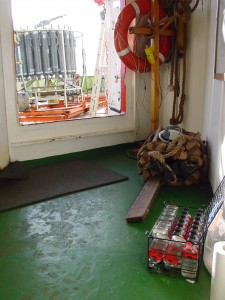
Much of salinity data collected at sea are derived from a variety of in situ probes. The quality of such data is dependent on proper calibration and correct operation of the probes used. Most in situ measurements are corrected and verified by separate bottle samples collected in the same area. It is not the remit of this article to cover all aspects of oceanographic water sampling, but many of the ground rules which apply to bottling and storage of samples for salinity analysis also apply to the sampling devices. In particular, attention must be paid to ensuring that sampling devices are clean, free from salts prior to operation and that all efforts are applied to reduce contamination or evaporation of the samples. Sampling devices, ideally, should be adequately flushed with the sample water before filling and then sealed tightly before retrieval. This operation should be relatively automatic when using oceanogra
A number of surveys have been carried out on the suitability of a variety of sample bottles:phic water bottles on a wire. When taking surface samples manually, the neck of the container must be thoroughly dried before fixing the cap.
- Polythene and, in general, other plastic bottles are not suitable. Many plastics “breathe”, other absorb dissolved components over relatively short time periods.
- Single plastic screw caps and rubber bungs do not provide a sufficiently reliable seal.

There should be no metal contact with the water sample during storage.The most widely tested and acceptable bottle is that of glass, (Type III is satisfactory), with a plastic cap insert (disposable) and a strong screw cap (bakelite). These bottles are relatively cheap and have a good working life-spin of about 10 years, before glass deteriorates from salt water contact.
For cleaning the bottles the following schedule is suggested:
- Detergent soak
- Multiple tap water rinses (until detergent remo
- Multiple distilled water rinses
- Oven dry (130°C)
Ideally, dry bottles, prepared in this way, should be used when sampling. However, if this is not possible, the bottles can be stored containing seawater (preferably of the salinity of the samples).
Filling schedule:
 Rinse bottle and cap three times with sample water.
Rinse bottle and cap three times with sample water.
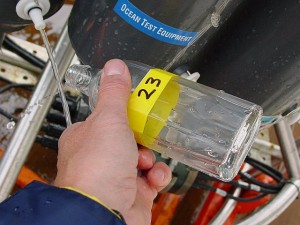 Fill bottle to base of neck (shoulder). Avoid overfilling as this can lead to sample seeping at the neck and subsequent salt crystal formation.
Fill bottle to base of neck (shoulder). Avoid overfilling as this can lead to sample seeping at the neck and subsequent salt crystal formation.
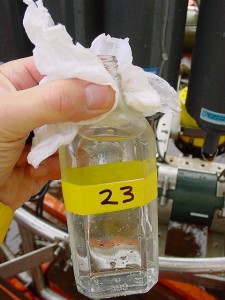 Dry cap and outside of bottle neck thoroughly with clean tissue, insert plastic plug and screw cap on firmly. This is essential to prevent formation of salt crystals in cap.
Dry cap and outside of bottle neck thoroughly with clean tissue, insert plastic plug and screw cap on firmly. This is essential to prevent formation of salt crystals in cap.
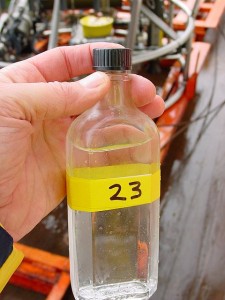 The delay between filling and capping the bottle should be kept to a minimum. Store bottles upright in well protected crates. Avoid large temperature changes.
The delay between filling and capping the bottle should be kept to a minimum. Store bottles upright in well protected crates. Avoid large temperature changes.
Do not allow the samples to freeze. Shake the sample 2-3 times prior to analysis to ensure homogeneity.
Devise an organized system for identifying bottles so that quick and orderly sampling can take place. It can be safer to label bottles and screw caps.
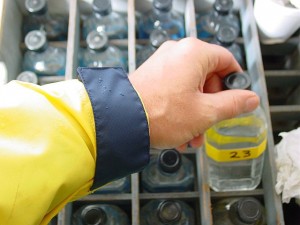
- Permanent numbering system is more useful as bottles are re-used many times.







 Visit Today : 51
Visit Today : 51 Visit Yesterday : 178
Visit Yesterday : 178 This Month : 5951
This Month : 5951 Total Visit : 302656
Total Visit : 302656 Hits Today : 148
Hits Today : 148 Total Hits : 717210
Total Hits : 717210 Who's Online : 1
Who's Online : 1